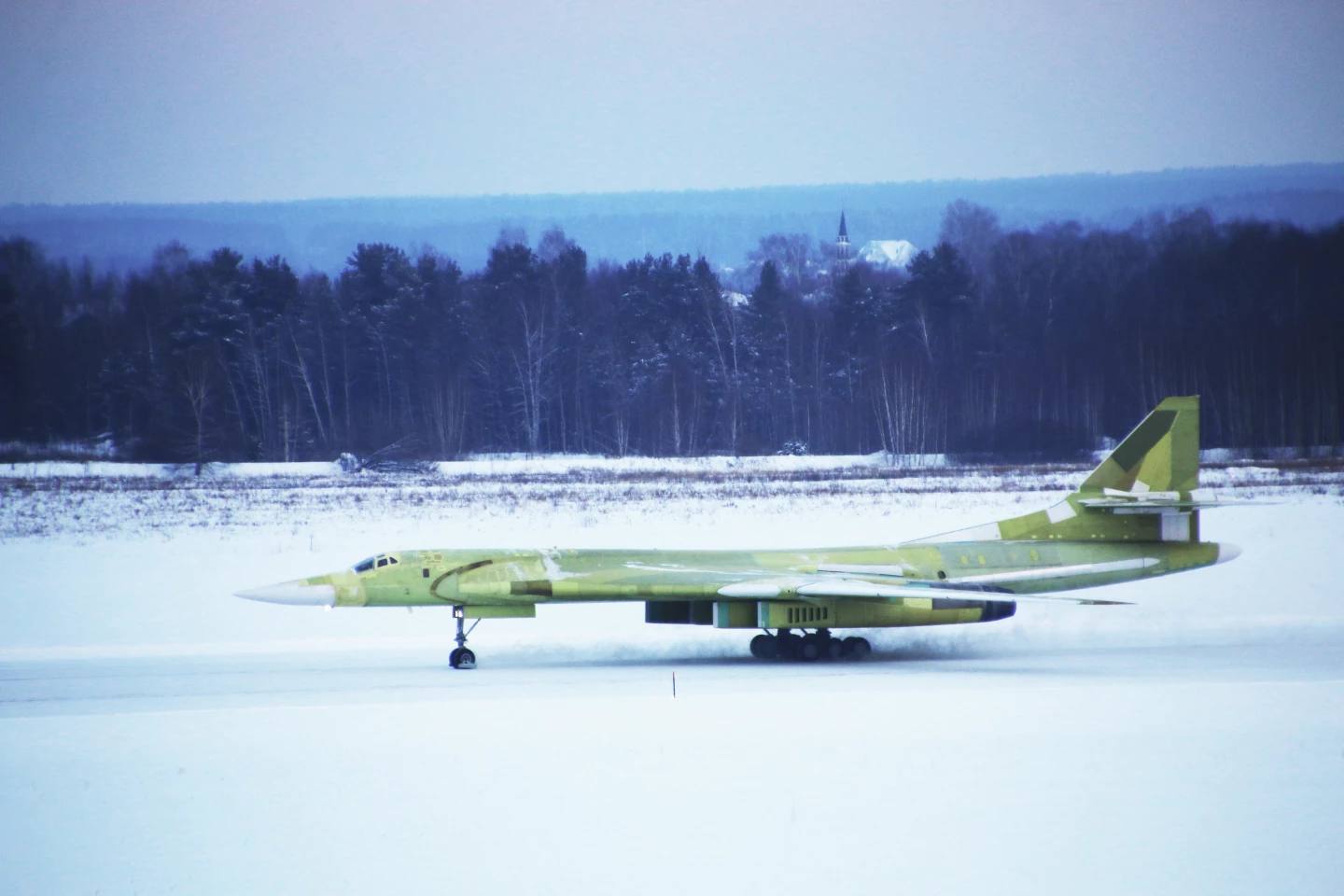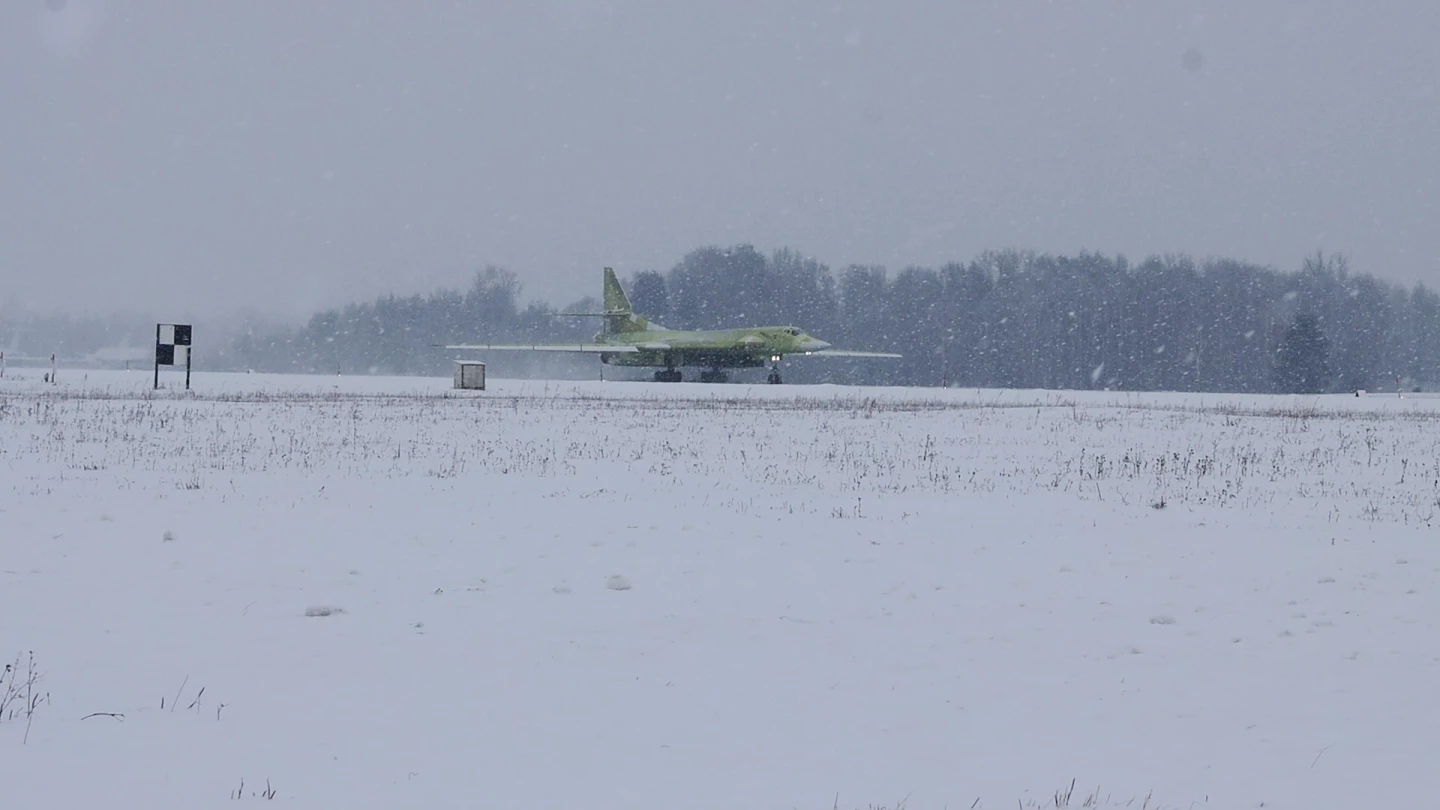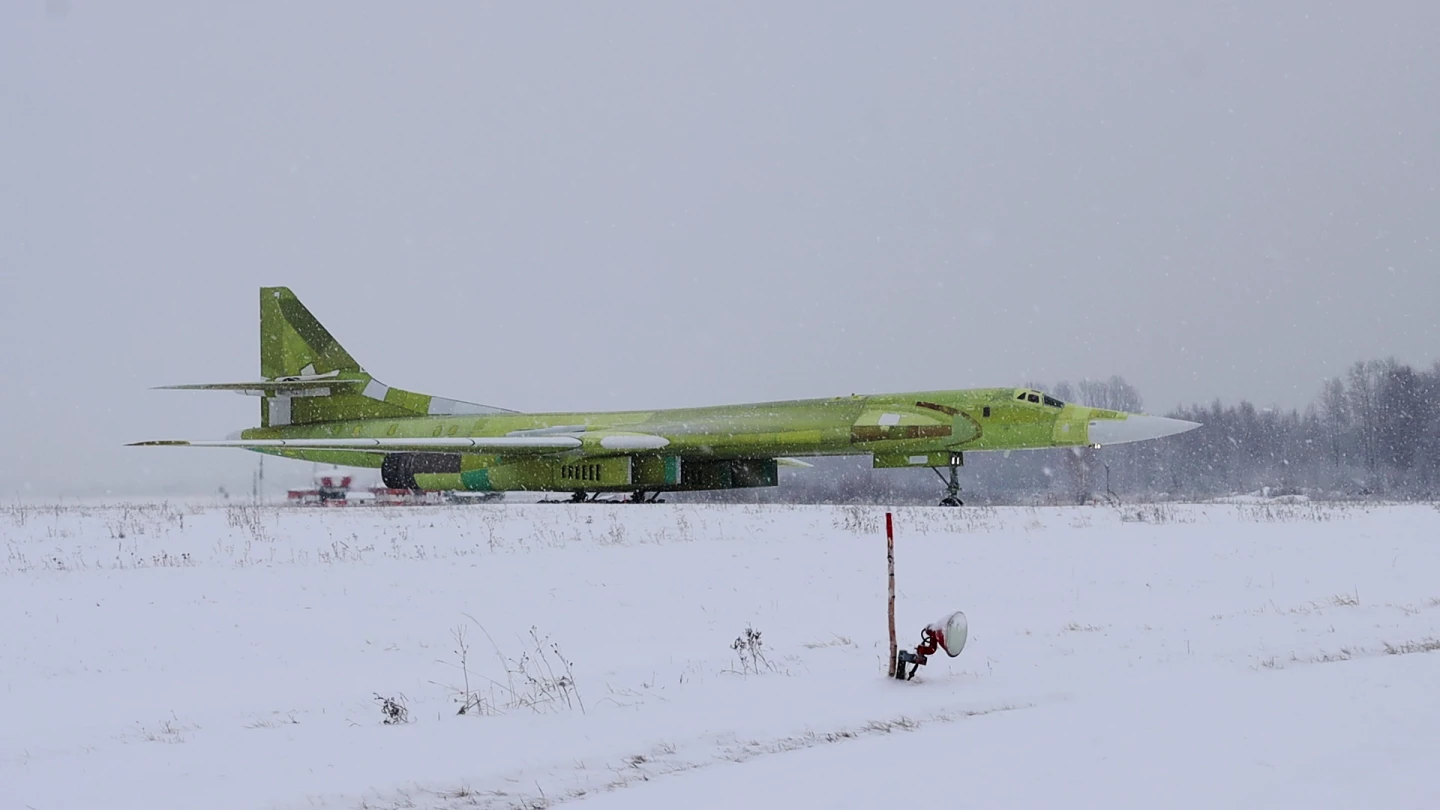In an echo of the Cold War, Russia's first newly manufactured Tupolev Tu-160M (NATO designation Blackjack) supersonic nuclear heavy bomber completed its maiden flight on January 12, reaching a height of 600 m (2,000 ft) during its 30-minute test.
Still awaiting its paint livery in its light green primer coat, the modernized Tu-160M took to the skies under the command of United Aircraft Corporation (UAC) test pilots from the Kazan Aviation Plant airfield where the bomber was assembled. The short test was intended to check the stability and controls of the aircraft before going on to the more ambitious testing phases.
The test flight marks the beginning of renewed full production of the Tu-160M after the completion of testing of an all-new prototype bomber that first flew on February 2, 2020. Production will include an initial tranche of 10 airframes under a state contract between the Ministry of Industry and Trade of Russia and Tupolev PJSC, a fully-owned subsidiary of majority Russian state-owned UAC, with a full run of 50 units planned.

The revival of production of the TU-160M marks a significant change in Russian military policy. Only 16 were reported as in service in 2016. Now, after a decision by Russian President Vladimir Putin, the aircraft is returning to full production of all-new aircraft for the first time since the line was shut down after the fall of the Soviet Union.
This is significant because the Tu-160 is notoriously expensive to build and several previous attempts to revive production have failed to, pardon the pun, get off the ground and have usually only resulted in work on completing or upgrading old airframes from Russia or purchased from Ukraine, which inherited some of the bombers after the fall of communism.
As a result, the revival of the Tu-160 means the reestablishment of whole production lines and the relearning of old skills, such as titanium vacuum welding, as well as introducing digital technologies.

The Tu-160M, also known as the White Swan, is famous not only as a relic of the multi-decade conflict of the Warsaw Pact versus NATO and its allied powers, it is also on the record books as the largest and heaviest supersonic combat aircraft, the fastest bomber ever flown, and the largest and most powerful supersonic aircraft with variable wing geometry ever built.
First flown in 1982, the Tu-160 was originally designed as an answer to the US Air Force B-1 Lancer supersonic bomber that was designed to deliver nuclear bombs through Soviet air defenses. Though the Americans curtailed production of the B-1 and the B-1B variant, development and production continued on the Tu-160.
The result was an aircraft with a crew of four that was larger than the B-1B, and is also faster and with a slightly larger combat range. At 54 m (177 ft) long and with a wingspan of 55 m (183 ft) when the swept wings are fully extended, the Tu-160 has a maximum takeoff weight of 275,000 kg (606,271 lb). It was originally powered by four Samara NK-321 afterburning turbofan engines, generating 55,000 lb each and pushing the bomber to a maximum speed of Mach 2.05 and a cruising speed of Mach 0.9 at a range of 12,300 km (7,600 miles), though these engines have now been replaced with a new series of NK-32 engines, which increase the flight range by 1,000 km (620 miles).

While capable of carrying 45,000 kg (99,208 lb) of gravity nuclear bombs in its two internal bays, the Tu-160 is more properly regarded as a missile carrier because its standard load is a revolving launcher for Raduga Kh-55SM/101/102/555 cruise missiles or 12 AS-16 Kickback short-range nuclear missiles. The Tu160M will also be able to field the Kh-47M2 Kinzhal hypersonic missile.
In addition to the new Tu-160M bombers, the existing Tu-160 fleet is being upgraded to Tu-160M standards, which includes new flight, navigation, communications, and control systems, as well as new radar and electronic countermeasures.
The first of the new Tu-160Ms is scheduled for delivery to the Russian Air Force in 2023.
"We have restored the full production cycle of the Tu-160, but already in the M modification, using modernized engines, modernized aircraft control systems, navigation systems, and weapons control systems" said Denis Manturov, Minister of Industry and Trade of the Russian Federation. "The modernization of the Kazan Aviation Plant played an important role in restoring the production of unique aircraft: the equipment of the shops, the flight test base was updated, the world's largest installation for electron beam welding and vacuum annealing of titanium was put into operation. Today we see significant prospects for the Tu-160 platform: further development will make it possible to use it for new types of weapons, including promising ones."
Source: UAC









